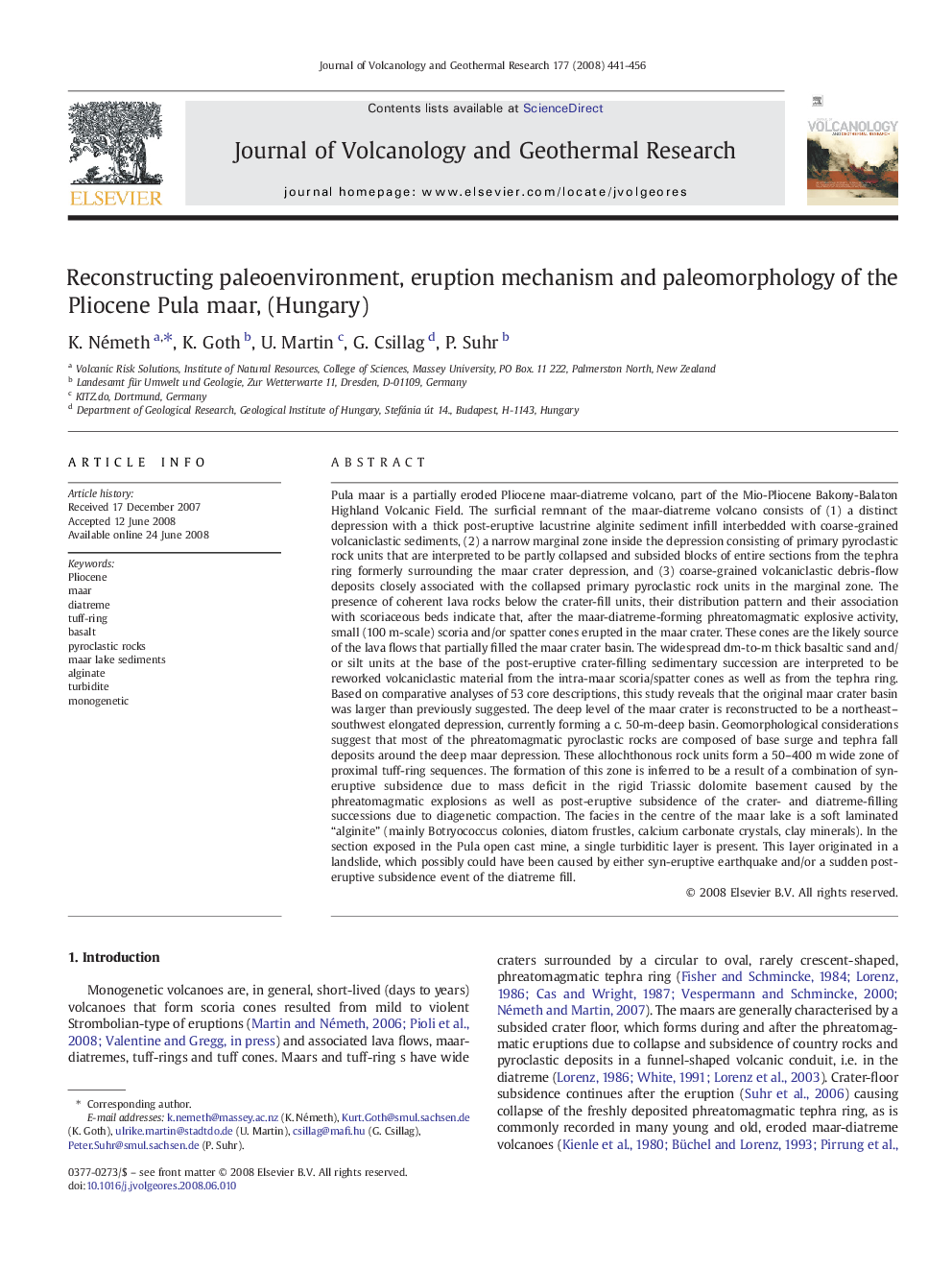| کد مقاله | کد نشریه | سال انتشار | مقاله انگلیسی | نسخه تمام متن |
|---|---|---|---|---|
| 4714490 | 1353968 | 2008 | 16 صفحه PDF | دانلود رایگان |

Pula maar is a partially eroded Pliocene maar-diatreme volcano, part of the Mio-Pliocene Bakony-Balaton Highland Volcanic Field. The surficial remnant of the maar-diatreme volcano consists of (1) a distinct depression with a thick post-eruptive lacustrine alginite sediment infill interbedded with coarse-grained volcaniclastic sediments, (2) a narrow marginal zone inside the depression consisting of primary pyroclastic rock units that are interpreted to be partly collapsed and subsided blocks of entire sections from the tephra ring formerly surrounding the maar crater depression, and (3) coarse-grained volcaniclastic debris-flow deposits closely associated with the collapsed primary pyroclastic rock units in the marginal zone. The presence of coherent lava rocks below the crater-fill units, their distribution pattern and their association with scoriaceous beds indicate that, after the maar-diatreme-forming phreatomagmatic explosive activity, small (100 m-scale) scoria and/or spatter cones erupted in the maar crater. These cones are the likely source of the lava flows that partially filled the maar crater basin. The widespread dm-to-m thick basaltic sand and/or silt units at the base of the post-eruptive crater-filling sedimentary succession are interpreted to be reworked volcaniclastic material from the intra-maar scoria/spatter cones as well as from the tephra ring. Based on comparative analyses of 53 core descriptions, this study reveals that the original maar crater basin was larger than previously suggested. The deep level of the maar crater is reconstructed to be a northeast–southwest elongated depression, currently forming a c. 50-m-deep basin. Geomorphological considerations suggest that most of the phreatomagmatic pyroclastic rocks are composed of base surge and tephra fall deposits around the deep maar depression. These allochthonous rock units form a 50–400 m wide zone of proximal tuff-ring sequences. The formation of this zone is inferred to be a result of a combination of syn-eruptive subsidence due to mass deficit in the rigid Triassic dolomite basement caused by the phreatomagmatic explosions as well as post-eruptive subsidence of the crater- and diatreme-filling successions due to diagenetic compaction. The facies in the centre of the maar lake is a soft laminated “alginite” (mainly Botryococcus colonies, diatom frustles, calcium carbonate crystals, clay minerals). In the section exposed in the Pula open cast mine, a single turbiditic layer is present. This layer originated in a landslide, which possibly could have been caused by either syn-eruptive earthquake and/or a sudden post-eruptive subsidence event of the diatreme fill.
Journal: Journal of Volcanology and Geothermal Research - Volume 177, Issue 2, 25 October 2008, Pages 441–456